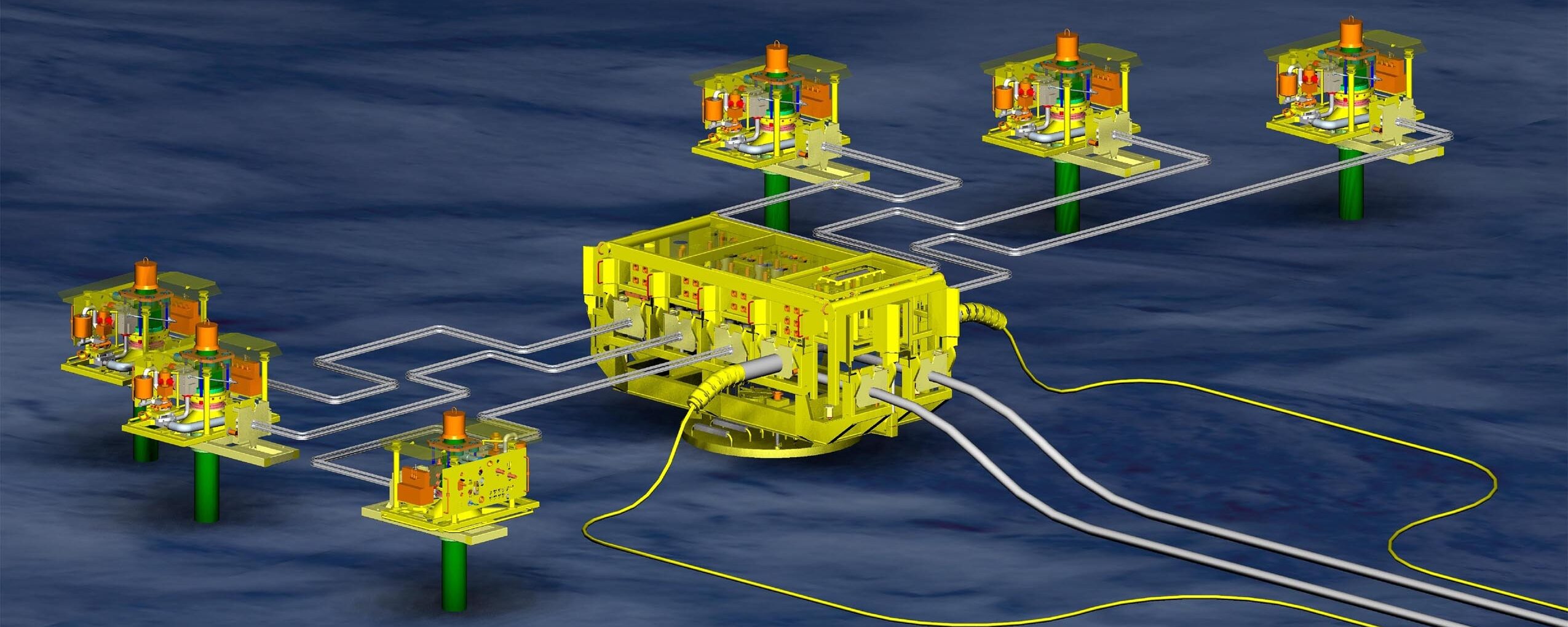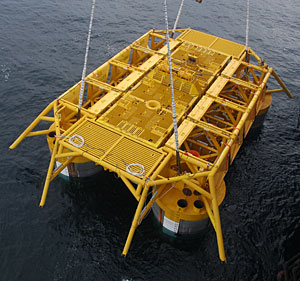Over the course of the last four decades, there have been projects that have been noteworthy for advances in technology and others that have changed the way the industry has done business, but few that have done both. One of those was Kerr-McGee Gryphon in the UK sector of the North Sea which had a material effect on both the subsea and floater biz sectors and was certainly one of the highlights of the decade of the 1990’s in terms of subsea xmas tree technology.
This project requires a bit of scene setting. Following on from the success of the Tentech designed production and test ship Petrojarl 1 in the mid 1980’s, a Norwegian consortium, Ocean Production Inc (OPI), saw the potential for more floaters and commissioned on speculation a new vessel based on the bigger Tentech 850 design. Almost from the time this vessel was ordered, it was being touted for a string of projects – including Conoco Heidrun and Saga Snorre, both in the Norwegian sectors. For various reasons, some to do with economics and some to do with the politics of the time in Norway, a deal was never sealed. So moving into the early 1990’s, this hull had no taker.
Now to the xmas tree side. At this time, there were not horizontal nor vertical xmas trees, just xmas trees. National Oilwell had pioneered the through-bore tree, but really did not have much success in selling them. Then BP’s Hans Hopper came up with the idea for a tree without valves in the main bore to allow through-bore intervention and which did not require an expensive completion riser. Hopper joined Cameron to commercial this idea. As with many subsea advances, it was not an easy sell and Cameron was still looking for a first buyer, despite the obvious advantages, although some were exaggerated. For example, Cameron claimed that the tree would be cheaper – as little as £400K – and quicker to manufacture which I may or may not have been true. Nonetheless it was a concept with much appeal as will be seen.
Into this mix came K-M in the UK, a company with no operated production. Its managing director was Bud McGuire. McGuire had made his name in the North Sea with Hamilton Bros, a company well known for not spending a dime when a nickel would do. It is a seemingly well known tale around the North Sea that K-M got ‘a very good deal’ on those first Cameron horizontal trees, known by their trademark moniker SpoolTrees. How good? I think you might have to ply a longtime Cameron salesman with some very good malt whisky to find out. In the end it probably did not matter much because Cameron found a very good business in those H-trees. Firstly it sold lots of them directly, particularly to many small independents who looked at the savings from not having to buy a completion riser – the H-tree is completed with a standard marine riser – and the fact that they were less expensive and had a reduced manufacturing time. Plus – and this is not widely known – Cameron got a royalty on every H-tree sold by its competitors for quite a few years because of the patent.
It is difficult to over-state the impact of the SpoolTree on the market and on chatter in the subsea sector. For whatever reason K-M chose it – cost, operability, technical interest, size (said to be one-third the height of a standard Cameron tree) or some combination – things started happening. Firstly, some subsea tech types were so enamoured with the concept, that it was ordered twice more – by Hamilton Bros for Johnston (Cameron) and Phillips for Joanne (FMC) – before K-M ever got the first ones in the water. The design for the latter two was slightly different – integral rather than bolted on valves.
K-M also got five different versions of those first SpoolTrees: ones for horizontal and vertical production wells; water injection; to produce aquifer water for injection (to reduce the processing requirement on the fpso topside); and for a dual purpose gas well.
This new type of xmas tree prompted lots of talking. Firstly there was a session at OTC 1993 about Amoco’s Liuhua 11-1 project and a presentation by the esteemed Brian Skeels of FMC on the pluses and minuses of H-trees, notably for projects which would require downhole pumps (esps). Brian’s key point was that there would have to be a re-evaluation and restructuring of the codes, standards and operating practices. What I noted at the time was that Amoco was main supporter of this paper, but all of the FMC drawings showed Joanne.
Later that summer, there was a big gathering in Aberdeen dubbed The Great Horizontal Tree Debate. I was there. Many of the subsea world’s heavyweights were on hand – either on panels or just listening – with the day chaired by Graham Ferguson of BP and Geoff Proud of Mentor Engineering Consultants. Interestingly Cameron did not participate directly, although Hopper and Gus Cassity were in the audience. Of significance was a remark made by Ferguson – concerns about the requirement to pull the completion if repairs needed to be done to the tree are of little importance because only 6% of subsea failures were related to the tree itself.
Back to the floater. When the first two options for selling or leasing the 850 went by the board, the Norwegian consortium, led by John Frederiksen who is better known in more recent times for his involvement with Seadrill, started to get nervous. So nervous that the normally reticent Frederiksen showed up at a floater conference in Spain to talk turkey with whoever might be interested. K-M eventually bought the unit in what must have been a knockdown price, but not too knockdown as OPI partner Smedvig reported making NOK80mn on its investment which means that Frederiksen must have made more.
The industry was also all abuzz about more floaters. In April 1993, Tentech announced that it planned to build another pts-type unit to its 700 design which was bigger than Petrojarl 1, but smaller than the 850. This unit was actually never built.
The 850, named Gryphon Producer, is still in service, having passed from K-M to Maersk and now to Total via a number of takeovers. As the first permanently moored fpso in the North Sea – there are debates about this point, but if defined as a unit acquired to operate on a single field this is correct, despite arguments re Petrojarl 1 and Seillean – it changed how fields were developed in the North Sea and how floater contractors varied back and forth between building on speculation for chartering and building and outfitting for a specific project. It is now an even bigger business on a global basis.
****************************
I would like send my best wishes for a safe holiday season and a saner 2021. Keep well.




